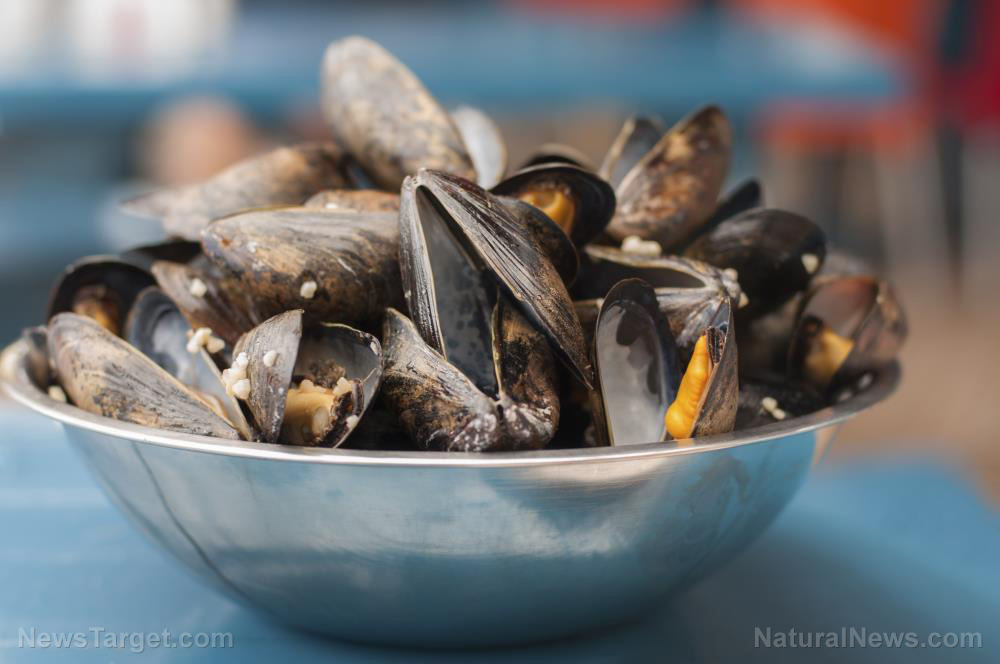It takes just 6 hours for billions of nanoplastics to accumulate in marine organisms
02/24/2019 / By Edsel Cook

The next time your dinner plate contains any kind of clam harvested from the sea, you may want to order a plant-based salad instead. A recent British study has shown that scallops and other similar marine bivalve mollusks can get completely contaminated by nano-sized bits of plastics after just a few hours of exposure.
The great scallop (Pecten maximus) is a tasty saltwater clam that is harvested and eaten on both sides of the Atlantic. Researchers at the University of Plymouth (Plymouth) deliberately exposed specimens of these important bivalves to nano-scale plastics. After a few hours, they evaluated the amount of pollutants that ended up in the filter-feeding mollusk.
The researchers found that six hours of exposure to plastic pollution led to the accretion of billions of nanoplastics in the guts of the scallops. These nanoparticles measured 250 nanometers in diameter on average.
Furthermore, even smaller nanoparticles could now be found throughout the bodies of the clams. Measuring only 20 nanometers on average, these tinier nanoplastics infiltrated important organs such as the gills, kidney, and muscle of the organism.
Earlier studies exposed the great scallop specimens to concentrations of nano-scale plastics that were much greater than the amounts expected in the oceans. The Plymouth experiment improved on the accuracy of its predecessors by using environmentally-relevant levels. (Related: Plastic pollution threatening the health of baby sea turtles.)
It only takes six hours to fill a great scallop with billions of tiny plastics
Plymouth researcher Maya Al Sid Cheikh and her team created nanopolystyrene particles of two contrasting sizes. They added carbon radiolabels to the particles so that they could follow the movement of the nanoplastics inside the bodies of the great scallops.

They exposed the scallops to carbon-radiolabeled nanoplastics that matched expected levels in the ocean. Once six hours of exposure had passed, they evaluated the number of nanoparticles that had entered the organs and tissue of the mollusks during that time.
Based on their findings, Cheikh reported that a marine organism can take up a large amount of nanoparticles in just a short amount of time. The pollutants also reached most of the vital organs of the animal within six hours of initial exposure.
Afterwards, the researchers transferred the contaminated great scallops into clean water so that the animals could purge the contaminants from their bodies. The smaller 20 nanometer-wide particles disappeared after 14 days. The larger 250 nanometer plastics needed 48 days before they were expelled from the gut of the scallops.
“We only exposed the scallops to nanoparticles for a few hours and, despite them being transferred to clean conditions, traces were still present several weeks later,” observed Cheik’s teammate Richard Thompson.
Nanoplastics could prove to be a serious risk to animals and humans alike
The Plymouth study is part of the larger RealRiskNano project, which is looking into the effects of microscopic and nano-scale plastic particles on the marine environment and the latter’s inhabitants. Cheikh and Thompson cooperated with their counterparts in several Scottish and Canadian universities, one of which was Scotland’s Heriot-Watt University.
“Understanding whether plastic particles are absorbed across biological membranes and accumulate within internal organs is critical for assessing the risk these particles pose to both organism and human health,” commented Heriot-Watt researcher Ted Henry.
Henry noted that the unprecedented use of radiolabeling provided strong proof that plastic nanoparticles were rapidly absorbed and slowly released by a marine animal.
The findings of the study could soon identify the potential effects of nanoplastics on organisms as simple as clams or as complex as humans. In particular, it could shed light on the consequences of exposure to large amounts of plastic pollutants over protracted periods.
Sources include:
Submit a correction >>
Tagged Under:
This article may contain statements that reflect the opinion of the author





















